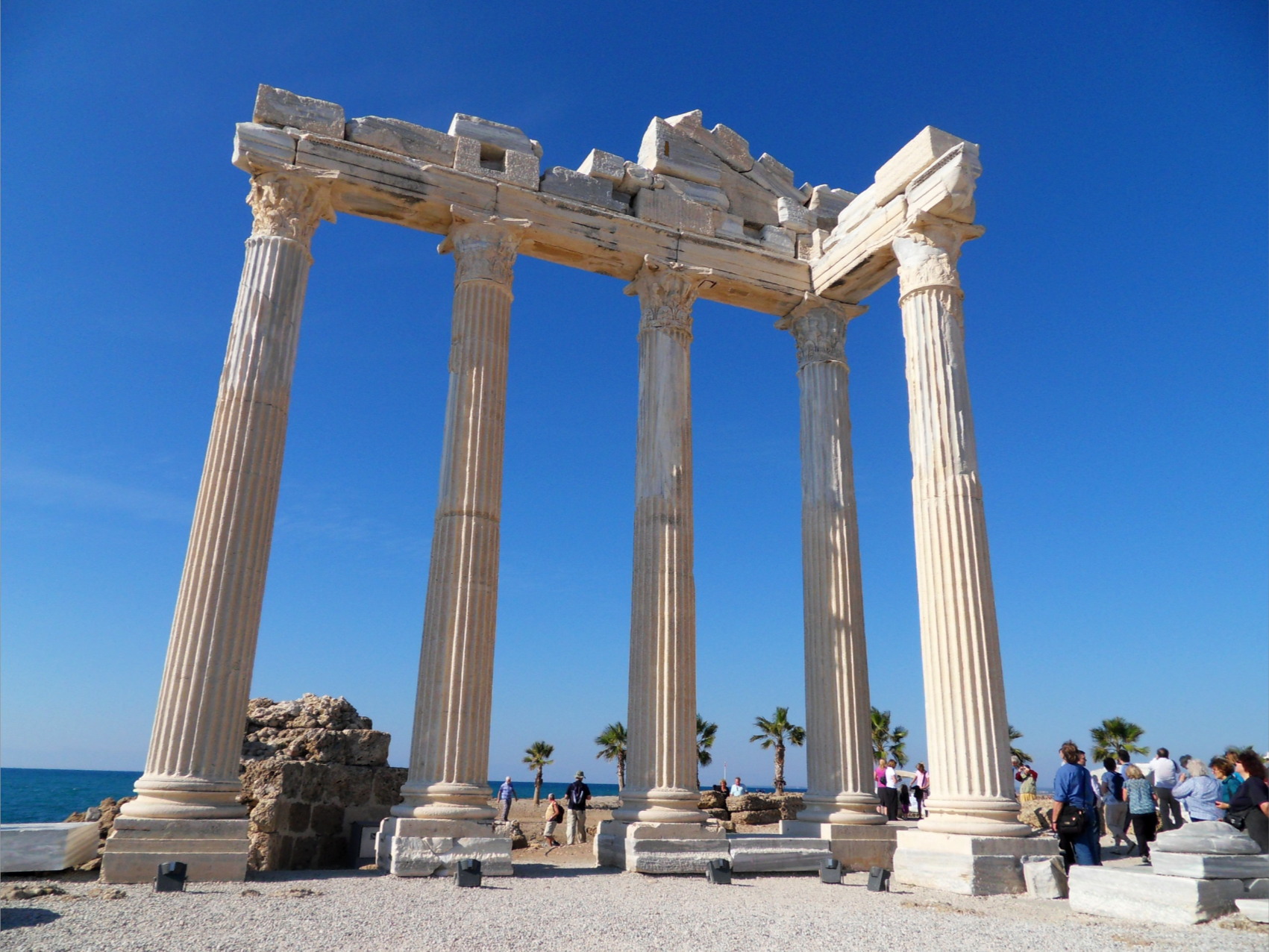
Side

Dating back to the 6th century BC, Side - named after Sida, daughter of Danaus - was one of the earliest settlements of the Anatolia region and was renowned for its harbour during the Hittite period when it became a prominent commercial town trading with the countries in the eastern and western Mediterranean.
Side was occupied by Alexander the Great in 333 BC who introduced its people to the Hellenistic culture, which flourished between the 4th and 1st century BC. Following Alexander’s death, Side came under the control of Egypt’s Ptolemy dynasty that controlled side until it was captured by the Seleucid Empire in the 2nd century BC. In 190 BC a fleet from Rhodes, the Greek island city-state, supported by Rome defeated the Seleucid fleet which was commanded by the Carthaginian general Hannibal.
In the 1st century BC, Side reached a peak when the Cilician pirates established their base and a centre for the slave trade, as its long sandy beaches were perfect as a hideout for pirates; although in time it was to establish itself as a legitimate commercial centre. The main period of prosperity for the city started around the second century BC with the development of its relations with the Roman; something that was to continue until the third century AD. Despite the occupations that it endured throughout its history, Side managed to preserve its autonomy becoming prosperous and an important cultural centre. Most of the ruins to be seen in the town date from Hellenistic and Roman times.
Although Side lost its prominence during the 4th century AD it regained its prosperity as a clerical centre in the 5th century AD. By the 10th century AD, due to a number of earthquakes, the activities of Christian zealots and Arab raids the site had been abandoned.
Excavations of Side began in 1947 and are an on-going process. One of the many attractions is the museum, which is housed in the restored remains of a public bath and displays many artefacts found during the excavations including vases, amphora, statues and sarcophagi. Across the road from the museum - which coincides with the course of the ancient road – are the remains of some of the marble columns. This colonnaded avenue leads to the agora (market place) the place where slaves would have been sold. From the agora the road leads to the Theatre which dates from the 2nd century AD. The theatre had a seating capacity of 15,000 people and was used not just for plays but also, in the late Roman period for gladiatorial combat. In the 5th and 6th century AD the theatre was used as an open air church.
The walls of the city are well preserved and contain the 2nd century BC Hellenistic main gate. Further along the avenue are the remains of a monumental gate and a fountain which has been restored. Part of the avenue is still buried beneath the current town of Side although the main street is lined with the ruins of homes and shops. Near the harbour there are two temples: One is dedicated to Athena (Side`s patron Goddess) and the other to Apollo, which has had 6 columns restored and re-erected. Also to be seen are an aqueduct and the remains of a hospital dating to the 6th century AD.
To see more photographs and take a virtual tour of the site click on the photoshow below.

| Site Map |